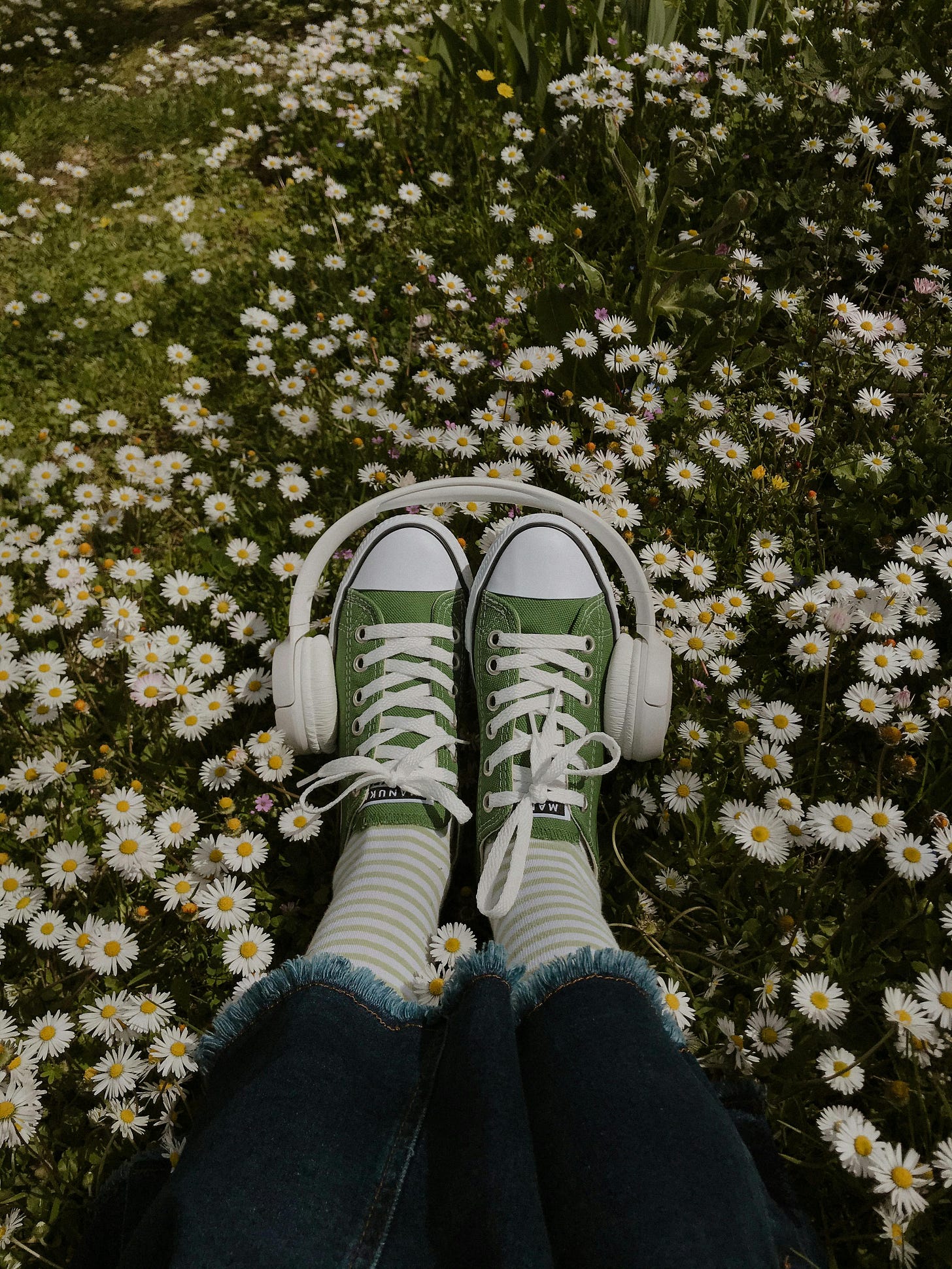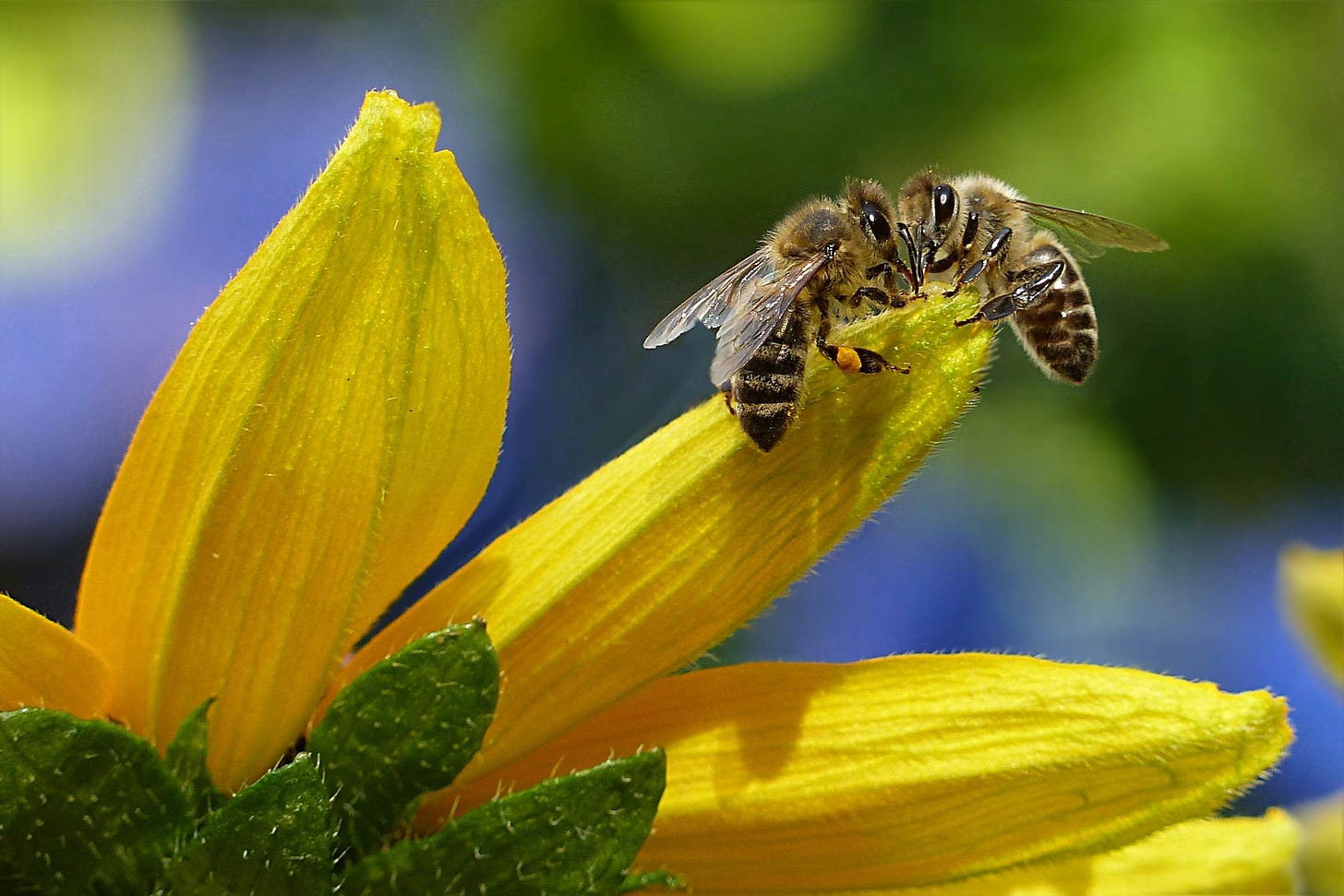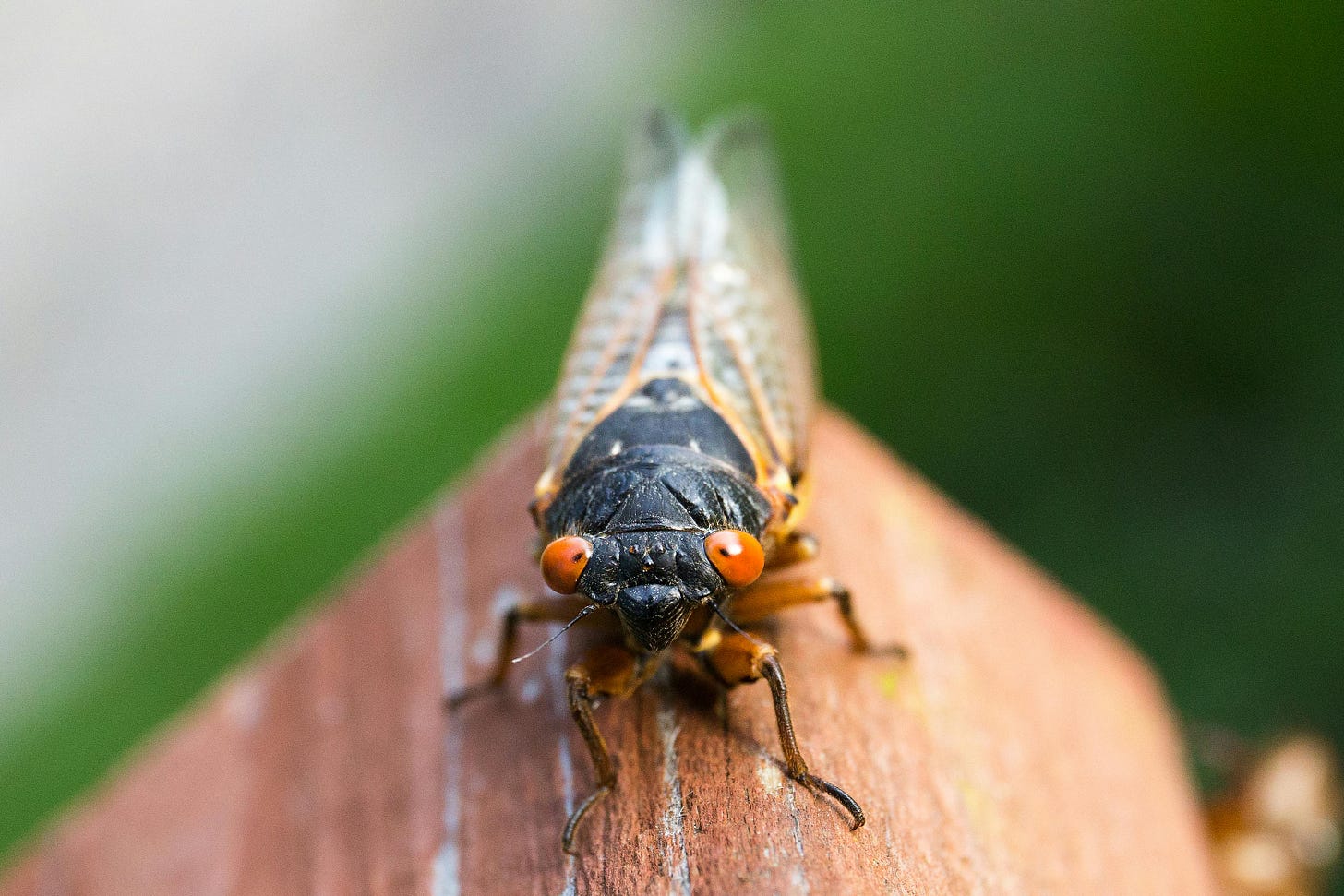🍄 Nature Sonics
An ode to summer’s end and the singing, dancing, gossiping, voting waggle of nature.
🍄 AudioDose Alice on Sonic Mushrooms: Listen to Earthcore Spin
🎧 Alice podcasts
📘 Alice books
The following is excerpted from our book Tuning into Frequency…
Humans like to think we’ve heard it all. But the truth? We’re deaf to a wild, magical playlist of infrasound “songs” playing all around us. Some of these songs are whole-body performances—Crocodiles throw “water dances,” making shallow pools ripple over their backs while head-slapping and grunting like swamp DJs to woo mates or warn rivals. Tigers rumble in sub-bass frequencies that boom across jungles, staking their claim with sounds we barely register but instinctively feel. Hello, we’re Alice and we are always in a state of wander… And we’re here to remind you: the world is already singing. The question is, are we finally ready to listen?
If We Could Talk to the Animals (and Insects)
“If you’re lucky, you might meet an animal that wants to talk to you,” writes Dutch philosopher and artist Eva Meijer in Animal Languages: Revealing the Secret Conversations of the Natural World. Turns out, animals don’t just grunt warnings or yelp in fear—they gossip, flirt, trade advice, and declare love, using “complex languages with grammatical and structural rules.” Language, it seems, isn’t just our monopoly.
Pet owners already know this. Your cat’s side-eye, your dog’s insistent pawing, that exact whine before a walk—they’re not random, they’re code. It’s a daily duet of signals, routines, and negotiations: you bring the treats, I bring the charm.
But in the wild, the conversations get stranger—and smarter. Birds and whales remix their songs depending on geography. Bees, those tireless alchemists of nectar, hold town hall meetings through touch, scent, and choreography. The honeybee waggle dance is less a “cute trick” and more a complex voting system—where each step is a coordinate, each wiggle a signal, and the hivemind literally decides together where to forage next. Animal behaviorist Thomas D. Seeley, in Honeybee Democracy, shows that bees embody what we like to call “collective intelligence”— a buzzing democracy of consensus long before humans stumbled into politics.
The buzz noise of bees is also a way they talk to each other and to us. Beekeepers know to listen to the intensity of the buzz, as it reflects their mood and if they are stressed or feeling threatened. The quieter the buzz, the calmer the hive is. And that intense high-pitched volume is when they are uneasy.
Not to be out-buzzed, cicadas crank out the dog-day soundtrack, their familiar high-pitch frequencies all about love songs. Like katydids, crickets have been rubbing body parts together for 300 million years to stridulate their stories. The death-watch beetle drums its head like a tiny Morse code to find a mate. Treehoppers? Besides their remarkable camouflage and social behaviors, they send secret signals through plant stems, their vibrations traveling underground like a hidden frequency of the forest.
Plant “ears”?
Researchers have proven that plants respond to vibrations, especially when it is the buzzing frequency of insects. Some of these insects can be invaders or “chewers,” and plants identify their frequency, creating defensive chemicals. Alternately, when it comes to friendly pollinating insects, plants can hear them using their flowers, and release pollen to help in their tasks.
Experiments by Lilach Hadany and Yossi Yovel at Tel Aviv University found that the ears are actually the flowers themselves. Using lasers, they were able to show that an evening primrose’s petals vibrate when hit by the sounds of a bee’s wingbeats, producing nectar. When they covered the petals with glass jars, essentially blocking the vibrations from the bees, the nectar never sweetened. They surmised that the flower could act similarly to how our outer ears work, channeling sound farther into the plant.
The (almost) final word…
More than 8 million species share our planet.
We only understand the language of one.
Now, for the first time, AI is beginning to tune into the symphonies of the non-human world—decoding the songs, buzzes, vibrations, and whispers that have surrounded us all along. These are not just noises; they are stories, conversations, memories of biomes we’ve barely begun to understand.
Imagine the moment we learn to listen—truly listen. We may hear joy in the trees, warnings in the oceans, resilience in the bees. Their voices may guide us toward healing, toward balance, toward remembering that we’ve never been alone.
“By golly, they’re singing, of all things. They’re doing something that we recognize as singing. And so what that has done for me is to make me feel that what lies ahead to be discovered is absolutely limitless. We are not at the pinnacle of human knowledge.
We are just beginning.”
—Katy Payne, acoustic biologist, who decoded the language of elephants and was among the first scientists to discover that whales are composers of song.
What else we are wandering…
🪴DJ Plant
Plant music is a way of monitoring electrical signals of plants as sound. Through patented sonification technology, PlantWave measures biological changes within plants, graphs them as a wave and translates the wave into pitch.
With PlantWave, every single note you hear is a real-time expression of a shift in a plant. The more active a plant is at any particular moment, the more notes you’ll hear. When a plant is less active, it will often drone or even stop producing notes.
🧠 AI Talks to Animals
Portable sensors and artificial intelligence are helping researchers decode animal communication—and begin to talk back to nonhumans (Scientific American)
🐋 A Whale of Understanding
Project CETI (Cetacean Translation Initiative is focused specifically on decoding the communication of sperm whales using AI to analyze millions of "clicks" recorded by underwater microphones.
🐦⬛ AI Bird Songs
Apps like Merlin Bird ID and BirdNET (both from Cornell Lab) use AI to identify bird species from their songs and calls. You can record a bird's song and the app will provide likely matches.
🦇 Bat Chat
A machine learning algorithm helped decode the squeaks Egyptian fruit bats make in their roost, revealing that they “speak” to one another as individuals. Turns out, they argue—a lot! (Smithsonian Magazine)
Craving more?
📘 Alice in Futureland books
🎧 Alice in Futureland podcasts
Thanks for tuning in.
For more wanderings, become an Alice in Futureland subscriber—it's free.
Invite your friends to this mad tea party and let's see how many things we can learn before breakfast.
©2025 Alice in Futureland







